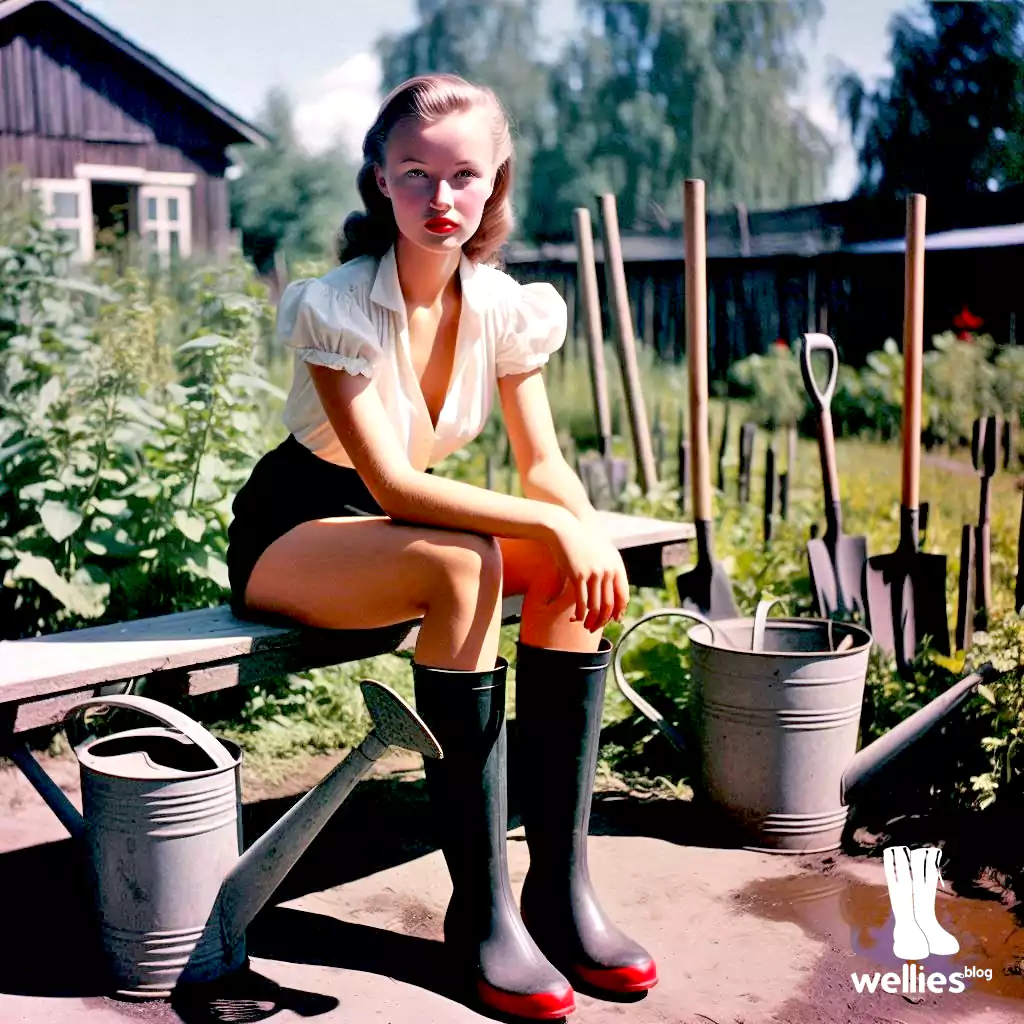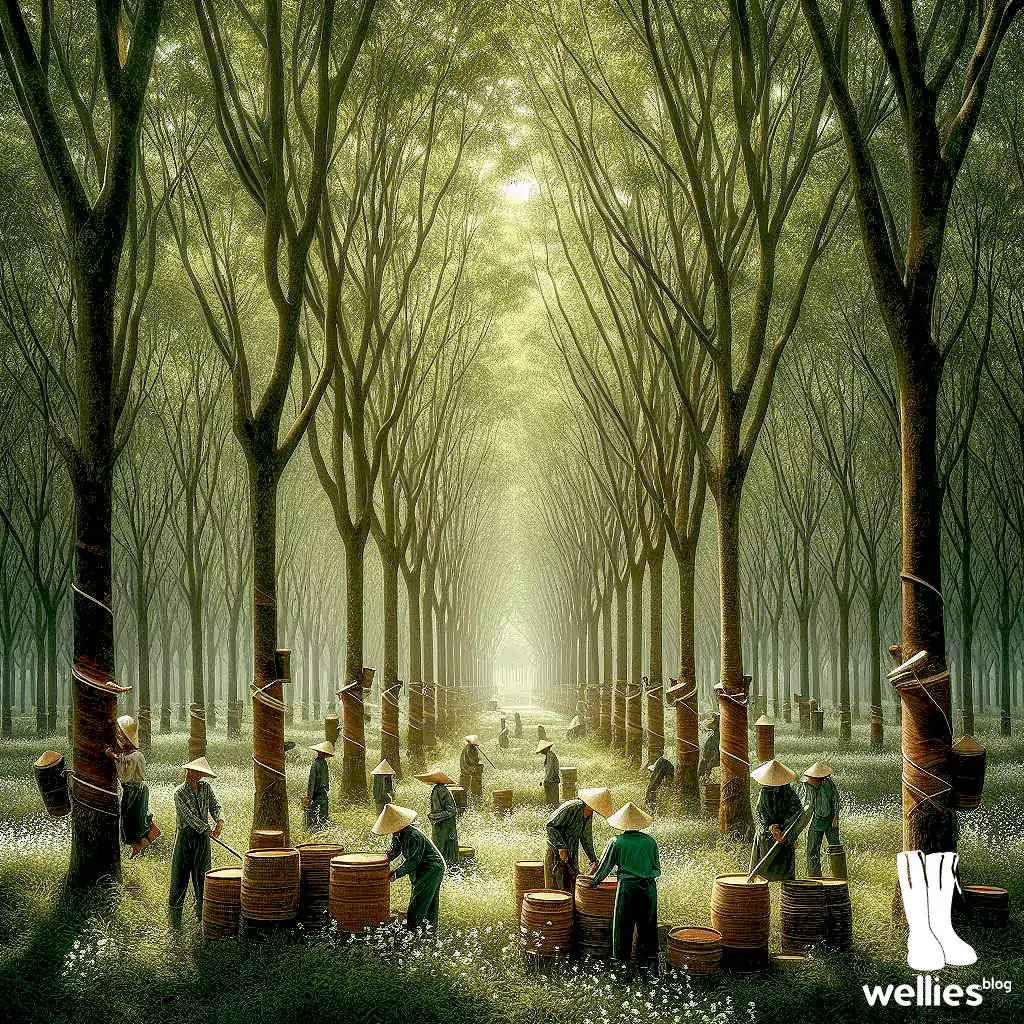In the 1950s, Canada was a land of rugged terrain, unpredictable weather, and burgeoning post-war development. Amidst this backdrop, rubber boots emerged as a practical and essential item of footwear, reflecting the country’s need for durable, weather-resistant clothing. These boots were not just a necessity for the working class but also a ubiquitous feature of daily life, crossing the boundaries between rural and urban settings.
The need for durability
Canada’s diverse landscape, ranging from expansive forests and agricultural fields to bustling cities and growing suburbs, presented a unique set of challenges. For many Canadians, especially those in rural and coastal regions, rubber boots were indispensable. Farmers, fishermen, and loggers relied on them to navigate muddy fields, wet docks, and forest floors. The boots’ waterproof nature made them ideal for these wet, often harsh environments, ensuring feet remained dry and warm.
Everyday life and popularity
In the cities, where rapid industrialization and expansion were underway, rubber boots gained popularity among construction workers, road crews, and even everyday commuters facing slushy streets during the long Canadian winters. The post-war era brought a sense of optimism and progress, yet the practical needs of navigating a country known for its challenging weather persisted.
Children often wore rubber boots, commonly referred to as “wellies,” to school during rainy and snowy seasons. These boots became synonymous with childhood play in puddles and snowbanks, embodying a sense of practicality and resilience that was very much a part of the Canadian spirit.
Cultural integration
Rubber boots in 1950s Canada were more than just functional; they became a cultural staple. Brands like Bata, which had a significant presence in Canada, provided affordable and durable options that catered to a wide range of needs. Advertising from the era highlighted these boots’ practicality and toughness, reinforcing their importance in everyday Canadian life.
Moreover, the simplicity and reliability of rubber boots meant they were embraced across various demographics. They were not seen as a fashion statement but as a reliable piece of gear. This broad acceptance underscored a collective understanding of the importance of practicality in footwear amidst Canada’s often unpredictable climate.

Legacy of the 1950s
The rubber boots of the 1950s set the stage for future innovations in outdoor and protective footwear in Canada. Their widespread use during this decade cemented their place in Canadian culture, symbolizing resilience and practicality. As the country continued to develop, the lessons learned from this era about the importance of durable, weather-resistant gear persisted.

Conclusion
In 1950s Canada, rubber boots were more than just shoes; they were a reflection of the country’s enduring relationship with its natural environment and the practical needs of its people. From the fields to the forests and the burgeoning cities, these boots provided the reliability and protection that helped Canadians navigate their daily lives. Their popularity and ubiquitous presence during this time speak to a broader narrative of resilience and practicality that continues to define Canadian culture to this day.





